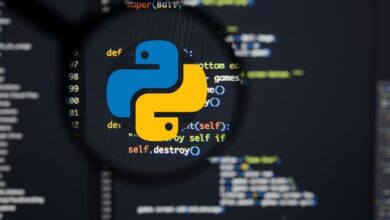What is Transformers in the Deep Learning World?
In the rapidly evolving field of deep learning, transformers have emerged as a groundbreaking technology that has revolutionized various natural language processing (NLP) tasks. Developed by Vaswani et al. in 2017, transformers have become the backbone of many state-of-the-art models, including BERT, GPT-3, and RoBERTa. This article explores the underlying principles of transformers, their architecture, and their significance in the world of deep learning.

Table of Contents
Understanding Traditional Sequential Models
Before delving into transformers, it’s crucial to comprehend the limitations of traditional sequential models like Recurrent Neural Networks (RNNs) and Long Short-Term Memory (LSTM) networks. These models process data sequentially, making them computationally expensive and hindering parallel processing.

The Transformer Architecture
The transformer architecture introduces the concept of self-attention mechanisms, which enables it to process entire sequences simultaneously. Instead of relying on sequential processing, transformers analyze the context of each word in relation to all other words in a sentence. This parallelization drastically improves training speed and performance.

Self-Attention Mechanism
The self-attention mechanism is the core innovation of transformers. It allows the model to weigh the importance of different words in a sentence when predicting the next word. This attention mechanism enables the model to capture long-range dependencies effectively, making it more contextually aware.
Encoder and Decoder Components
Transformers consist of two main components: the encoder and the decoder. The encoder processes the input sequence and extracts its essential features, while the decoder generates the output sequence based on the learned representations. This architecture has found immense success in various NLP tasks, including machine translation and text generation.
BERT – Bidirectional Encoder Representations from Transformers
BERT is a pre-trained transformer model introduced by Google in 2018. It employs bidirectional training, meaning it considers both left and right context when processing a word. This bidirectional approach allows BERT to grasp rich contextual information, leading to significant improvements in various language-related tasks.

GPT-3 – Generative Pre-trained Transformer 3
GPT-3, developed by OpenAI, took the NLP world by storm upon its release. With 175 billion parameters, GPT-3 is one of the largest transformer models. It can perform a wide array of tasks, including language translation, text completion, and even coding. GPT-3’s impressive performance showcases the immense potential of transformers.
RoBERTa – A Robustly Optimized BERT Pretraining Approach
RoBERTa, proposed by Facebook AI in 2019, is an optimized version of BERT. By fine-tuning BERT’s training methodology, RoBERTa achieved state-of-the-art results in various NLP benchmarks. This highlights the significance of continuous research and improvements in transformer models.
Transformers and Transfer Learning
Transfer learning, leveraging pre-trained models for specific tasks, has become a game-changer in the deep learning domain. Transformers have played a pivotal role in enabling transfer learning, as their pre-trained representations can be adapted to various downstream tasks with minimal fine-tuning.
Transformers in Image Processing
While initially designed for NLP tasks, transformers have also made their way into computer vision. Vision transformers (ViTs) have demonstrated remarkable capabilities in image recognition tasks, proving the versatility and adaptability of transformer architectures.
Limitations of Transformers
Despite their impressive performance, transformers are not without limitations. Training large transformer models requires substantial computational resources, making them inaccessible to smaller research groups. Additionally, they may struggle with certain tasks that require explicit sequential reasoning.
Ethical Considerations in Transformer Use
The advent of powerful language models raises ethical concerns, such as potential misuse for generating fake news or spreading misinformation. It is crucial to employ transformers responsibly and implement safeguards to mitigate harmful impacts.
The Future of Transformers
As research in the field of deep learning continues to advance, transformers are expected to evolve further. More efficient and powerful transformer architectures will likely emerge, opening doors to new possibilities and applications.
Conclusion
Transformers have undoubtedly reshaped the landscape of deep learning, particularly in the realm of natural language processing. With their ability to handle long-range dependencies and parallelize computations effectively, they have become the go-to choice for various NLP tasks. From BERT to GPT-3 and beyond, transformers have demonstrated their potential in understanding and generating human language. As the field progresses, it is essential to embrace this transformative technology responsibly, ensuring it brings positive changes to our world.
FAQs
1. What exactly are transformers in deep learning?
Transformers are a type of neural network architecture that revolutionized natural language processing by enabling parallel processing and capturing long-range dependencies in text data.
2. Are transformers only used in NLP tasks?
While transformers were initially designed for NLP tasks, they have shown adaptability in other domains, such as computer vision, through models like Vision Transformers (ViTs).
3. What makes GPT-3 so special among transformer models?
GPT-3 is remarkable due to its massive size, boasting 175 billion parameters, which enables it to perform a wide range of tasks with impressive results.
4. Can transformers be used for transfer learning?
Yes, transformers are widely used in transfer learning, as their pre-trained representations can be fine-tuned for various downstream tasks with minimal effort.
5. Are there any ethical considerations with transformer use?
Indeed, the increasing power of transformers raises ethical concerns, and it is essential to use them responsibly, implementing safeguards against potential misuse or harm.
Machine Learning books from this Author:





